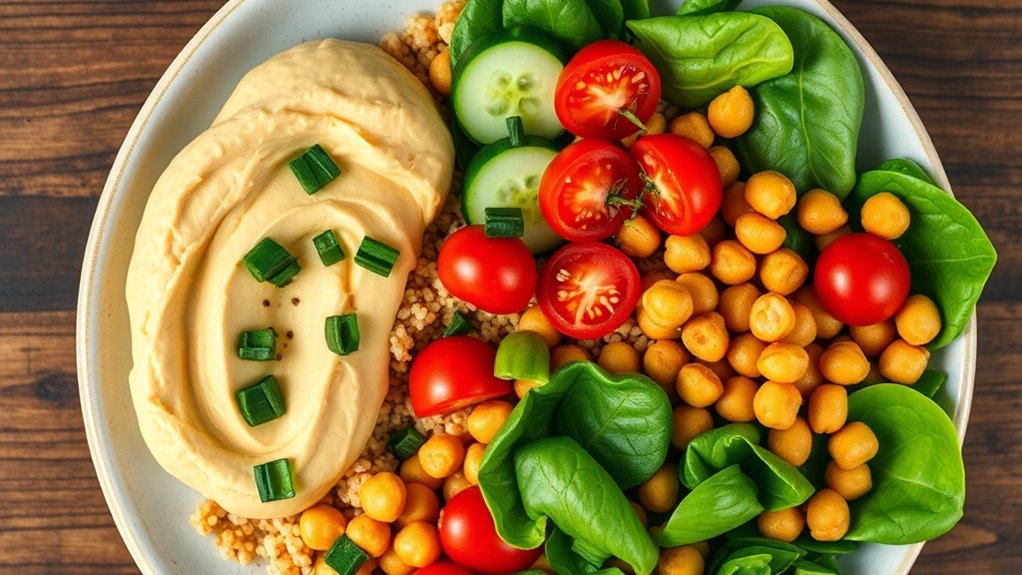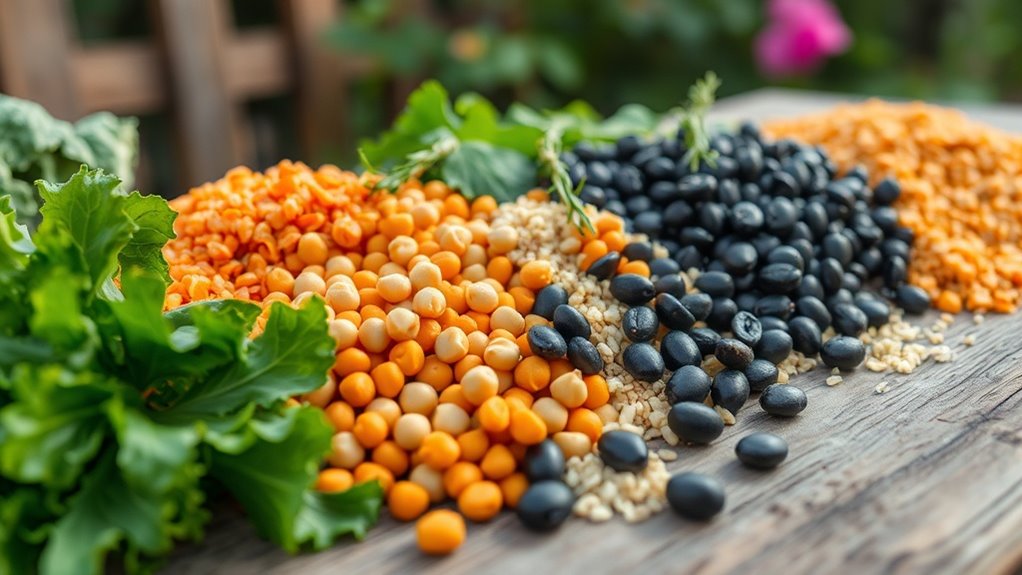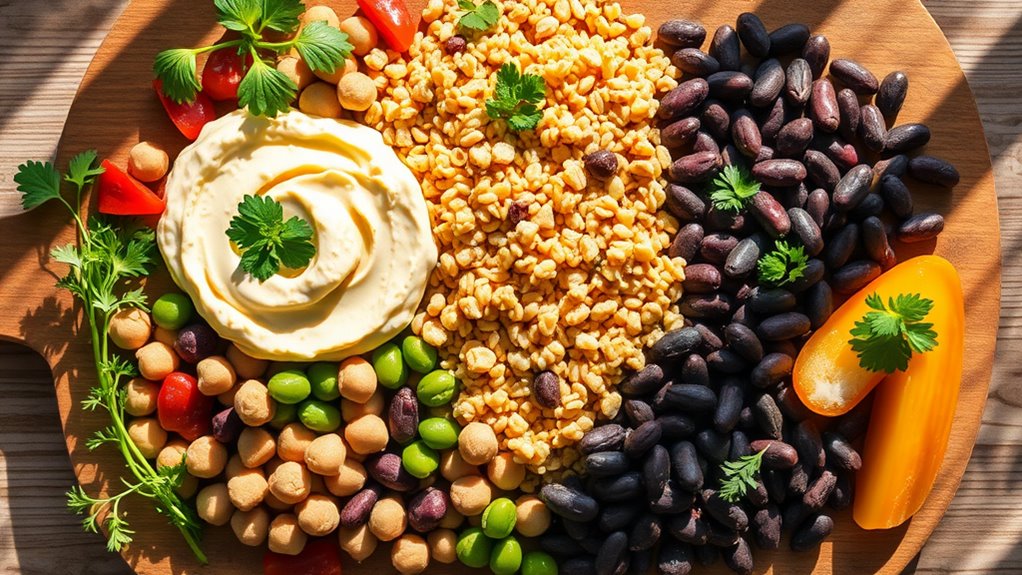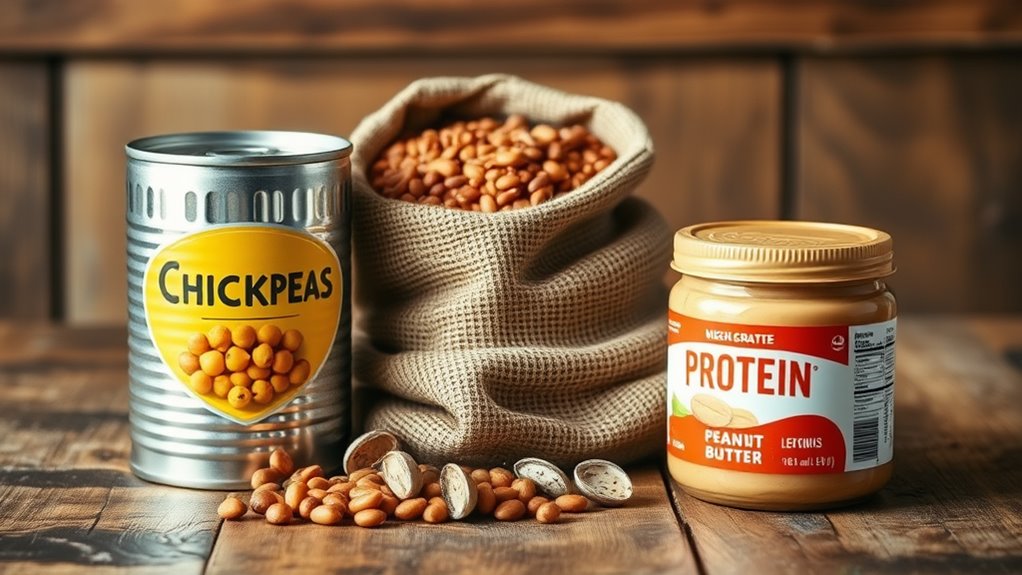How to Build a High-Protein Plate With No Animal Products
Many people underestimate the protein potential of plant-based foods. In fact, certain combinations can offer just as much protein as animal products. If you’re looking to create a high-protein plate without relying on meat or dairy, there are several strategies and ingredients to consider. Understanding how to mix and match these components can transform your meals into protein-rich powerhouses. Let’s explore the best options to maximize your plate while keeping it completely plant-based.
Understanding Plant-Based Proteins
When it comes to building a high-protein plate, understanding plant-based proteins is crucial.
Protein-rich vegan sources like lentils, chickpeas, and quinoa not only provide essential amino acids but also offer fiber and nutrients that support your overall health. Combining different plant proteins ensures you meet your dietary needs, making it easier to create balanced, satisfying meals without relying on animal products. For example, using edamame and tempeh can elevate your protein intake and enhance your nutrient profile.
Top High-Protein Vegan Ingredients
Knowing the benefits of plant-based proteins sets the stage for incorporating top high-protein vegan ingredients into your meals.
Start with legumes like lentils and chickpeas, which are high in protein and fiber.
Quinoa and buckwheat provide complete proteins, while tofu and tempeh offer versatile options.
Don’t forget about nuts and seeds for added healthy fats and protein density. Including diverse protein sources ensures you get all essential amino acids necessary for optimal health.
Creative Meal Combinations
Creating delicious high-protein meals doesn’t have to be a chore; in fact, it can be downright enjoyable.
Combine lentils with quinoa for a protein-packed base, add chickpeas for crunch, and toss in leafy greens for nutrition.
You can even mix edamame with brown rice and nuts for a satisfying bowl. Adding nutrient-dense legumes can further enhance the meal’s health benefits.
The options are endless, so get creative and enjoy experimenting!
Flavorful Seasoning and Cooking Techniques
To enhance the flavor of your high-protein meals, mastering seasoning and cooking techniques is essential.
Experiment with herbs like thyme and rosemary or spices such as cumin and smoked paprika.
Try roasting vegetables or using methods like sautéing and grilling to bring out natural flavors.
Marinating beans or tofu in citrus juices can also add zest, making your dishes truly delicious. Additionally, incorporating high-protein ingredients like lentils or chickpeas can boost both nutrition and flavor in your meals.
Nutritional Considerations for a Balanced Plate
While high-protein foods are vital for muscle repair and overall health, balancing your plate with the right mix of nutrients is equally important. Aim for a combination of protein, healthy fats, and carbohydrates to ensure optimal energy levels and nutrient absorption. Canned beans can serve as an excellent source of plant-based protein while also adding fiber and flavor to your meals.
| Nutrient | Sources | Benefits |
|---|---|---|
| Protein | Lentils, chickpeas, tofu | Muscle repair, satiety |
| Healthy Fats | Avocado, nuts, seeds | Heart health, hormone balance |
| Carbohydrates | Quinoa, sweet potatoes | Energy, digestion |





